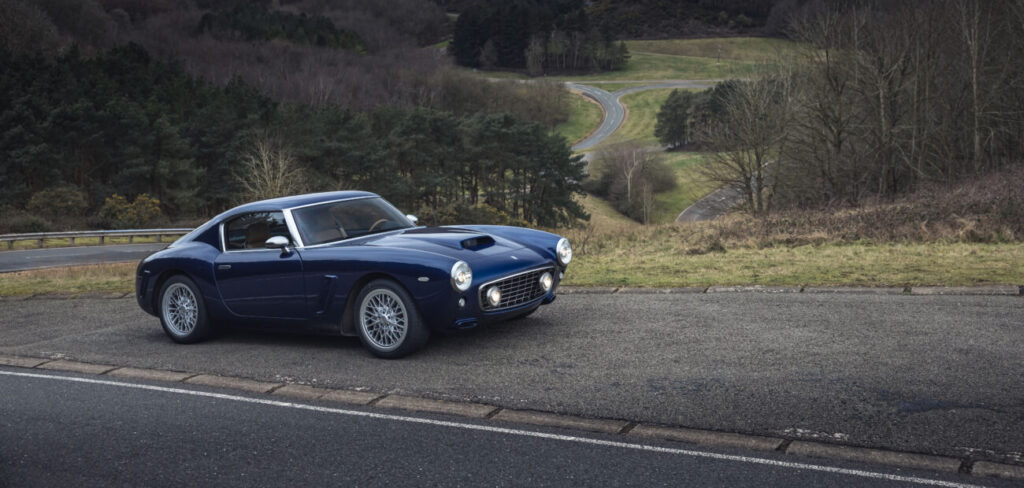UK-based motorsport, automotive and engineering company RML has started to put its Short Wheelbase, a limited run homage to Ferrari’s 1960s GT cars, through a testing program more akin to an OEM vehicle launch than a niche sportscar. To achieve this, the company’s engineering team relocated to UTAC’s Millbrook Proving Ground in Bedfordshire, UK.
“We’ve undertaken over 30 whole-vehicle programs over the years, most of which are ‘white-label’ and confidential,” said Michael Mallock, RML Group’s CEO. “So a comprehensive test program is just part of our normal process, and one which we’ve also applied to the Short Wheelbase. The only difference is that this car has our name on it.”
During the first month of testing, RML’s engineers will focus on validating the extensive simulation work it has already carried out. Chassis dynamics, powertrain and overall quality are all set to be rigorously assessed around UTAC’s myriad test tracks. Nic Rutherford, RML’s project engineering lead for the Short Wheelbase, said he is pleased with the results so far: “Although we’re relatively early in the full test program, we’ve seen a strong initial correlation between the car’s predicted behaviors, and how it performs in real life.”
Once the car’s driveability has been signed off, due to happen by mid-April, the more grueling, and certainly less glamorous, part of the program commences: durability. An intensive six-week test will replicate three-years’ typical usage for a driver of a mainstream vehicle, and not a more valuable and recreational car like the Short Wheelbase. A visit to a climatic wind tunnel is first on the schedule, which will see the Short Wheelbase’s HVAC system put through its paces in extremes of cold and heat, including replicating the car sitting in a traffic jam in the UAE at up to 50°C.
The dynamic tests will be just as arduous. A 2,000km stint on UTAC’s high-speed bowl will provide data after the car has been driven at a constant high velocity over a prolonged period. Hundreds of kilometers of Belgian Pavé replicate some of the worst impacts that the car’s suspension will sustain, with additional ‘medium pothole’ tests thrown in for good measure. Repetitive, low-speed, maneuver-intense driving will also be part of the program, as will body torsion-twist tests to reveal any weakness in the car’s carbon-composite structure.
“I’m more than happy to let the team here at UTAC-Millbrook take over for this part,” concluded Mallock. “It’s a process that’s particularly hard on the car, but for us to put our name on the final product, it’s essential.”


